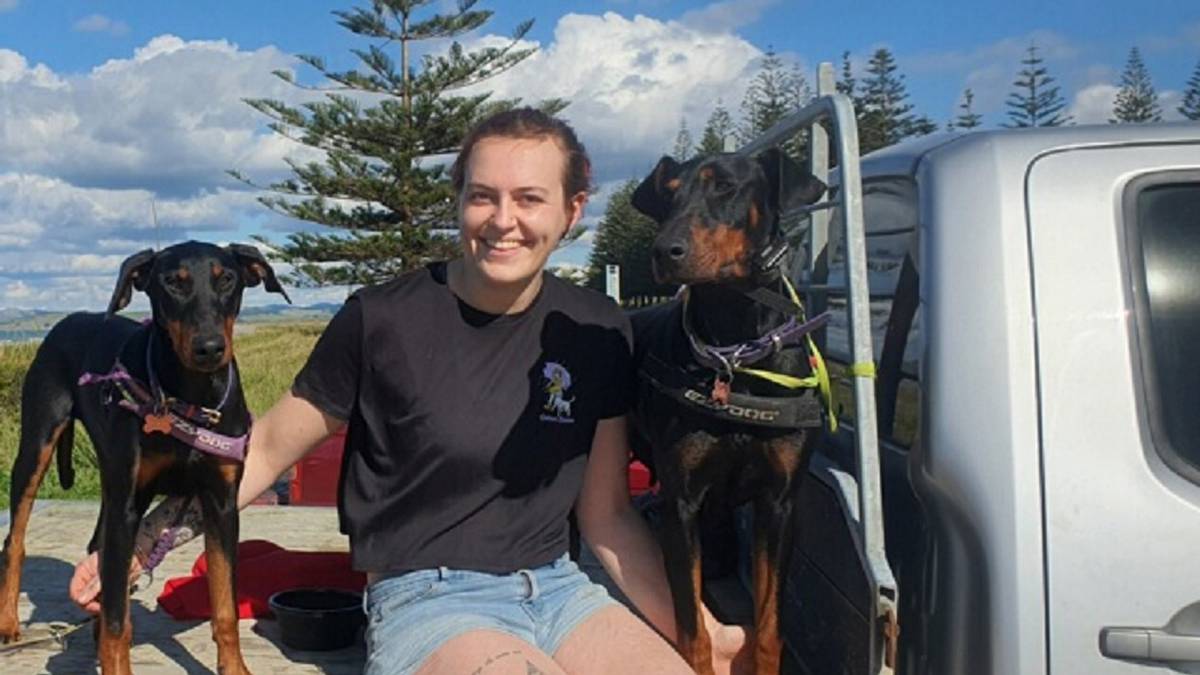Professional dog trainer Kimberly Williams said knowing what to do when confronted by a threatening dog depends on the situation and dog.
A worrying number of dog attacks on people in the Far North has prompted an emergency doctor to call for more resources to prevent further harm.
ACC figures show there have been nearly 4000 claims
for dog bites over the last 10 years in the Far North, on both adults and children.
While there are mostly around 350 claims per year, last year peaked at 436 claims, and this year to date there have already been 245.
Dr Natasha Duncan-Sutherland, an emergency doctor at Auckland Hospital’s Adult Emergency Department, has been advocating for solutions for the last several years in a bid to make communities safer.
Since 2018 she has been researching how to prevent dog-related injuries to people and has contributed to a series of studies along with Safekids Aotearoa and the Starship Foundation.
In general, the rates of dog attacks on people are high across New Zealand, she said.
“It’s a nationwide issue. Once you see a couple of these sorts of injuries you want to do something about it.
“I’ve seen a German shepherd have its full jaw around the head of a child and bite off part of his ear.
“There are serious injuries that happen to children.
“Adults are bitten just as much, but children are more likely to be hospitalised because they have more injuries on their face.
“Adults are bitten more on the arms and legs and are managed in the emergency department.”
/cloudfront-ap-southeast-2.images.arcpublishing.com/nzme/33BAJYJXEBZESXOYVG74WYTZC4.jpg)
She contacted the Northern Advocate following several recent stories about roaming dogs attacking and killing dozens of livestock in rural Kaikohe.
Packs of feral dogs killed more than 120 livestock on a farm near Cape Rēinga last year and a campground and several tracks in Te Paki Reserve were closed for five weeks after a hunter was threatened and a horse rider chased by feral dogs.
Duncan-Sutherland said the ACC figures are “far more concerning statistics than dog-attacks to stock or the few attacks that occurred within the bush”.
A recent study, not yet published, looks at how council animal management services are funded and how that relates to dog bite injuries, she said.
Animal control resourcing in the Far North was “not equitable and poorly resourced overall,” she said.
“It’s a large part of the issue as to why there are greater injuries in some areas.
“The Far North has had limited financial investment into animal management and do control strategies, as this is funded through registrations which many people find hard to afford.
“It’s a massive geographical area with a large number of people and dogs they have to manage, and it’s not possible.
“That’s where something needs to change. It’s going to require some resourcing for that to happen.”
ACC figures show there were 3979 dog bite-related claims between January 2012 and August 2022.
ACC injury prevention leader James Whitaker said many of the injuries would be preventable “if people were doing the right things”.
Parents and caregivers should never leave a child unattended with a dog, Whitaker said.
“A lot of it comes down to supervising children and teaching kids the right way to do things.
“Some children can get excited around dogs and dogs might not like that behaviour.”
/cloudfront-ap-southeast-2.images.arcpublishing.com/nzme/QSYH2N6TFGDHSA3JLJRNKO5O4A.jpg)
Whitaker said most dog-related injuries happen at a person’s own home or at a relative or friend’s place with a dog.
People should learn to “read the signs” of an agitated dog and watch that children don’t get too excited which can lead to a bite, he said.
“There’s a lot of potential in teaching children the right ways to interact with the dog.
“No matter what age you are, if you see someone with a dog and you don’t know it, ask the person if you can pat it.
“When you go to pat the dog slowly present the back of your hand first. Do things slowly, let them sniff your hand.”
Professional dog trainer Kimberly Williams, from Kimbi’s K9’s in Haruru, said knowing what to do when confronted by a threatening dog depends on the situation and dog.
“If a dog is presenting as aggressive or confident, I wouldn’t tell it to go away, it would take that as a confrontation.
“If it was a nervy dog, it would likely run away.”
Williams, who works in dog behaviour modification, said dogs are all about body language.
Standing facing a dog could be seen as combative, whereas standing side-on can come across as less of a threat, she said.
Williams said ignoring the dog, while calmly moving away from it, can sometimes work to defuse a situation.
Carrying a “dog deterrent” – such as an air horn or an ultrasonic unit that emits a discomforting, high-powered sound – can also give peace of mind when out walking, she said.
“A lot of owners are highly uneducated and assume just because their dog is nice to them at home that’s how it’s going to behave in public.
“A lot of people should do more training with their dogs. Many don’t put the time and effort that the dogs deserve, let alone require.”
Duncan-Sutherland said solutions have to come from “multiple organisations and have to be community-driven”.
Strategies include better resourcing of council animal management teams, affordable sterilisation of dogs, and Māori-led initiatives, she said.
Encouraging individuals to report incidents, along with making it easier for health services and vets to notify animal control when incidents occur, would also help, she said.
The Far North District Council has been approached for comment.




